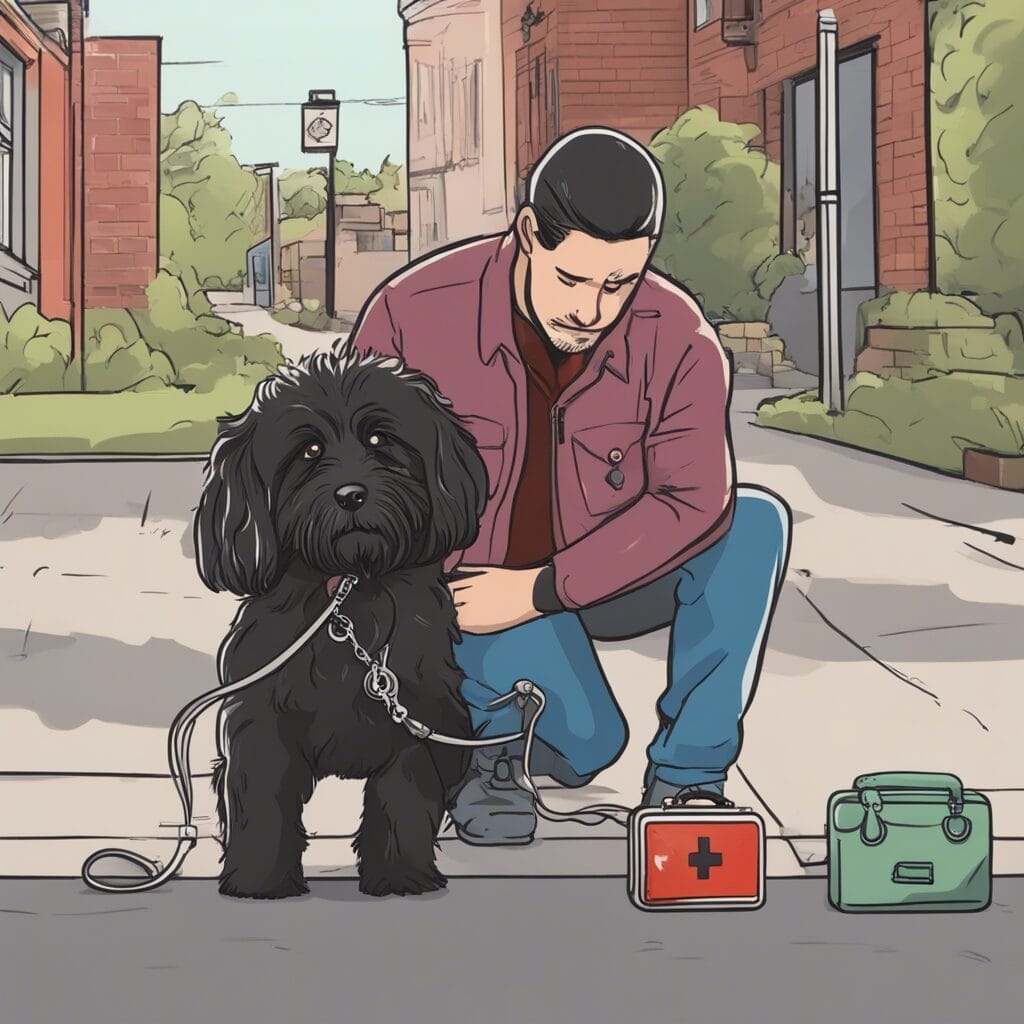
When a dog bites, it’s not just a physical injury that occurs; there are many layers to the incident, including the severity of the injury and the legal aftermath. Dog bite levels help us understand how serious a bite is and what actions need to be taken. The role of dog bite attorneys becomes crucial in navigating the legal implications that follow a bite, ensuring victims receive the support and compensation they deserve.
Recognizing the different levels of dog bites is essential for owners to understand their responsibilities and the potential legal consequences. Whether it’s a minor scratch or a severe attack, each level has specific considerations in terms of medical care and legal action. This understanding can help prevent future incidents and guide owners on the necessary steps to take if their dog bites someone.
Introduction to Dog Bite Levels and Their Importance
Dog bite levels range from barely noticeable to fatal incidents. These levels help us gauge the severity of a bite and the necessary wound treatment. For instance, a single bite with punctures that does not go deeper than half the length of the dog’s teeth may require less medical attention than multiple level 4 dog bites.
Understanding these levels is crucial because a dog presents a significant potential for harm if not properly managed. Dog behavioral training and awareness can prevent bites, but when a dog does bite, knowing the level of bite helps in providing the right care. For example, skin punctures from a single bite with deep bruising around the wound indicate a need for immediate medical attention and possibly, legal steps.
When a bite scale reaches a 6 on the Dunbar Bite Scale, indicating that a dog bite and attack is rare but has led to fatal outcomes, the decision on whether the dog should be euthanized might arise. In such cases, the expertise of dog bite attorneys is invaluable for navigating the complex legal landscape that follows such tragic incidents.
For bites that result in puncture deeper than half the length of the dog’s tooth, professional evaluation and treatment are necessary to prevent infections and complications. Dog owners must be aware of the legal implications following such incidents, including potential claims and the need for a personal injury attorney to manage the case.
Finally, the importance of understanding dog bite levels extends to public safety and the well-being of the dog. By educating themselves on the signs of aggression and the potential danger their pet may pose, owners can take proactive steps to prevent bites, ensuring the safety of both people and their pet.
Breaking Down the Dunbar Dog Bite Scale
The Dunbar Dog Bite Scale serves as an important evaluation tool in assessing the severity of a dog bite. It categorizes dog bite injuries into levels, helping medical professionals, dog bite attorneys, and owners understand the extent of harm and the necessary steps for treatment and legal action. By analyzing medical records related to dog bite incidents, the scale provides clear guidelines on how to address each level of severity.
Level 1 Dog Bite: The Barely Noticeable
A level 1 dog bite is when there’s no actual bite but maybe some aggressive behavior. The dog may snap or lunge but doesn’t make skin contact. This level is a warning and a sign to check the dog’s behavior.
Level 2 Dog Bite: Skin Contact but No Puncture
At this level, the dog’s teeth touch the victim’s skin, but there’s no puncture. It’s a sign the dog displays aggressive tendencies towards a person or another animal and might bite if provoked further.
Level 3 Dog Bite: Minor Skin Breaks
A level 3 bite includes one to 2 bites with minor skin breaks but not deep punctures. It’s a serious warning that the dog has bitten and could do more harm if not trained or controlled.
Level 4 Dog Bite: Deep Puncture Wounds
This level involves a single bite that leads to deep puncture wounds, often deeper than half the length of the dog’s tooth. It’s a clear indication of aggressive behavior and potential danger to others.
Level 5 Dog Bite: Multiple Bites with Deep Punctures
Level 5 is when a dog inflicts multiple bites with at least one being deep. This level on the Dunbar Dog Bite Scale shows a dog has become out-of-control, causing severe injury and posing a high risk to public safety. Legal consultation with a personal injury attorney becomes crucial for victims to navigate compensation claims and for owners to understand their liabilities and the potential for legal action against them.
Level 6 Dog Bite: Beyond Severe with Fatal Outcomes
The most severe level, 6, involves dogs who commit attacks that lead to fatal injuries. This represents the highest potential risk and requires immediate action, including evaluating the dog’s future and addressing the legal and emotional aftermath of such a tragic event.
What Should You Do if Your Dog Bites Someone
If your dog bites someone, immediately separate your dog to prevent more injuries. Check if the victim needs medical help and call the police to report the incident. Exchange your contact info with them and offer to cover medical expenses. Stay in touch with the victim to monitor their recovery and share your dog’s medical records. Consider changes to stop this from happening again, like improved training and securing your dog. Understand there may be legal implications, so it’s wise to know your responsibilities and possibly seek legal advice. Each step you take ensures everyone’s safety and prevents future incidents, revealing valuable insights into responsible pet ownership.
Immediate Response Steps
If your dog bites someone, it’s crucial to act quickly and responsibly to address the situation. Your first step should be removing your dog from the area to prevent further harm. It’s not just about safety; it’s about showing you’re taking the incident seriously.
Next, check on the victim. They might need immediate medical attention, and offering to help can make a significant difference in how the situation unfolds.
You’ll also need to contact the police to file a report. Being honest and descriptive about what happened helps ensure the report is accurate and can protect you legally. Exchange contact information with the victim. They’ll likely need to reach out to you for insurance purposes or to follow up on the incident.
Offering to pay for the victim’s medical bills isn’t just about doing the right thing; it’s about mitigating the situation and potentially avoiding a lawsuit. But if the victim will not accept the offer it may be advisable to consult an attorney.

Post-Incident Follow-Up
After the immediate crisis is handled, it’s crucial to stay in touch with the victim to monitor their recovery and address any concerns. The days following the incident can be stressful for both you and the victim, so maintaining open and empathetic communication is key. You’ll want to check in regularly, offering support and updates on any steps you’re taking to prevent future incidents. This gesture not only shows responsibility on your part but can also ease the tension and potentially mitigate the victim’s distress.
You should also share your dog’s medical records, especially their vaccination history, to reassure the victim about their risk of infection. If you haven’t done so already, now’s the time to ensure your dog is up to date on all shots, particularly rabies.
Moreover, consider implementing changes to prevent similar incidents. This might involve seeking professional training for your dog or making adjustments to your home environment to better manage your pet’s interactions with visitors.
Lastly, document all your interactions and steps taken post-incident. This record can be invaluable for tracking progress and demonstrating your proactive approach to ensuring it doesn’t happen again. Remember, your goal is to learn from the incident and take meaningful actions to safeguard everyone involved, including your dog.
Employer Liability for Dog Bites
Legal Implications
Understanding the legal implications of your dog biting someone is crucial, as it can lead to serious consequences for both you and your pet. If your dog bites someone, you’re potentially facing criminal charges or civil lawsuits, depending on the severity of the bite and local laws. You’ll need to check your local ordinances because some areas have stricter rules for dog bites, especially if your dog is declared dangerous.
You should also be aware that if your dog’s bite causes serious injury, you might be liable for the victim’s medical expenses, lost wages, and pain and suffering. This can quickly escalate into thousands of dollars. It’s essential to contact your homeowner’s insurance or renter’s insurance company as they may cover some of the costs associated with the bite.
Furthermore, your dog could be at risk. Depending on the laws in your area, dogs that are considered a danger could be seized and, in extreme cases, euthanized. To protect yourself and your dog, it’s critical to understand your responsibilities and the potential legal outcomes. Seeking legal advice is a wise step to navigate through this challenging situation, ensuring you’re fully informed and prepared to take the necessary actions to mitigate the consequences.
Learning From the Incident
Reflecting on a dog biting incident offers valuable lessons on ensuring such situations are prevented in the future. It’s crucial to understand why your dog acted out. Was it fear, pain, or protection of territory? Identifying the trigger helps you empathize with your pet and take steps to manage their environment better.
You’ll also learn the importance of staying calm and composed. Panicking can escalate the situation, making your dog more anxious. It’s a reminder to practice patience and stay in control, ensuring everyone’s safety.
Moreover, this incident highlights the importance of clear communication. You’ve got to be upfront with the victim and authorities about what happened. It’s about honesty and taking responsibility, which can significantly affect the outcome for you and your dog.
Lastly, it’s a wake-up call to review how you’re socializing and training your dog. Are you providing enough mental and physical stimulation? Is your dog comfortable around strangers or in new environments? It’s a prompt to invest time in understanding and nurturing your dog’s behavior to avoid future incidents.
Learning from this experience isn’t just about preventing another bite. It’s about fostering a safer, more understanding relationship between you, your dog, and your community.
Preventing Future Bites
To prevent future incidents, it’s essential to identify and address the underlying causes of your dog’s biting behavior. Start by observing when and why your dog feels the need to bite. Is it fear, territorial behavior, or maybe a lack of socialization? Once you’ve pinpointed the trigger, you can begin to work on a solution.
If fear is the root cause, you’ll need to gradually expose your dog to the situation that scares them, ensuring it’s a positive experience. For territorial dogs, establishing firm boundaries and teaching them that not every outsider is a threat can help. Lack of socialization requires a bit more patience, introducing your dog to new people, animals, and environments slowly and safely.
It’s also crucial to invest in training, whether that’s classes or working with a certified animal behaviorist. They can provide you with strategies tailored to your dog’s needs, helping to prevent future bites.
Don’t forget the basics, either. Ensure your dog gets plenty of exercise and mental stimulation to reduce anxiety and boredom, which can lead to biting. By taking these steps, you’re not just preventing bites; you’re improving the quality of life for both you and your dog.
Conclusion
After your dog bites someone, it’s crucial to act swiftly and responsibly. Ensure everyone’s safety, contact authorities, and provide aid to the victim. Follow through with legal obligations and insurance matters.
Use this incident as a learning opportunity to prevent future occurrences. Remember, handling the situation with empathy and taking proactive steps to address your dog’s behavior demonstrates your commitment to safety and responsibility. By doing so, you protect not only the community but also your dog’s well-being.
- About the Author
- Latest Posts

Sara is a passionate writer and an avid lover of Havanese dogs. With several years of experience in dog training, breeding, and care, she has developed a deep understanding and admiration for the Havanese breed. Sara’s mission is to provide valuable insights, resources, and tips to help Havanese dog owners provide the best possible care and nurturing for their beloved pets.








